Abbekerk’s aftermath: the ships

MS Abbekerk
Abbekerk was not even three years old when she sunk. She sank not only distance-wise in the middle of the Atlantic Ocean. She also sank at the crossing of two tectonic fracture zones: the Charlie-Gibb fracture (east-west) and the Mid-Atlantic ridge (north-south) that divides the continents. This is a very ‘mountainous’ area on the ocean floor with depths varying from 1 to 5 kilometers deep. Her exact position is not known and so we will never know how deep she rests.
Her design was so modern (and successful) that after the war two more ships were built following the same blueprints: Arendskerk and Annenkerk.
The name Abbekerk lived on in the 1946 build SS Abbekerk, a C3 standard ship taken over by the VNS in 1947 as part of the ‘War Reparations Deal’.
SS Widestone

SS Widestone (1922). Sunk with all hands in November 1942. (Source: genealogy.rootsweb.ancestry.com)
After she had delivered the survivors of Abbekerk in New York Widestone was loaded again and returned to England as part of a convoy. During her next voyage – as part of convoy ONS144 – she was torpedoed on the 17th November 1942 by U-184. There were no survivors. http://uboat.net/allies/merchants/2436.html
(U-184 was on her first patrol and she and her 50 crew have been missing since the attack on Widestone).
HrMs Soemba
Soemba and her sister ship Flores were to become well known for their efficiency as gunboats during coastal attacks in various landings in Italy and Normandy, earning their nick name ‘the terrible twins’.
After the war Soemba had different tasks. She ended her career as a training vessel in Den Helder, Netherlands. She only retired in 1985.
HMS Wallflower
She served as an escort vessel for over a hundred convoys for the entire duration of the war and came out of it without a scratch. Highlights of her service were the sinking of U-523 and rescuing the survivors of Abbekerk.
After the war she was sold and converted as a whalecatcher.
She was scrapped in 1966.
U-604
She made another 5 war patrols and was not very successful in the number of ships she sank, only 6. She was however successful in surviving, because during the time of her deployment the average survival time of a U-boat (and its crew) was just short of 2 patrols.
On her 6th patrol she was severely damaged by an American anti-U boat patrol plane just of the coast of Brazil. The damage to severe to sail back a meeting was arranged with U-185 and U-172 so they could take her crew on board. The Allied forces were anticipating the meet because of radio transmissions and were able to pinpoint the location.
The American bomber which attacked the three U boats however was shot down by the anti aircraft guns of the U-185 and U-604. U-604’s crew was split over the two other U boats after which she was scuttled. U-172 reached France safely but U-185 was sunk on the 24th of August by planes of an American aircraft carrier. A part of her crew, and crew of U-604, survived the attack and were taken prisoner.
KtLt Holtring was wounded and committed suicide on board the U-185 just before she sank.
Konvooi DM01:
As said before, of the 10 escort vessels of convoy DM.01 to Singapore, 7 were sunk within 2 months. Most of the other ships were having better luck. HrMs Tromp survived the war although the Japanese had reported her sunk at 5 different occasions. The elderly HMS Durban was withdrawn from active service in England and eventually sunk and used as breakwater to protect the Mulberry harbours during the Normandy landing. HmiS Jumna also survived the war.
As did the merchant ships Mount Vernon, Aorangie and Sussex. Narkunda was deployed as troopship during the North African landings. She was bombed on the way back (and without troops) and sank losing 31 crew.

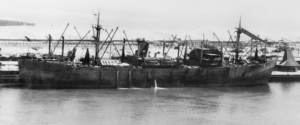
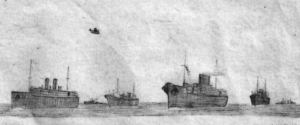
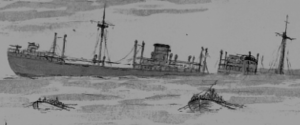
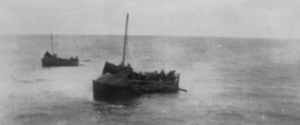
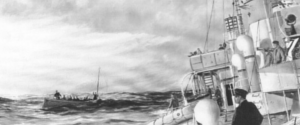
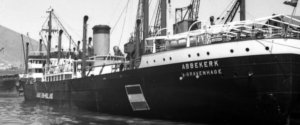









Stilletjes heb ik de gebeurtenissen en verhalen gelezen. Ben onder de indruk van de belevenissen.
knap werk!
Mooi verhaal. Heb nog een kerst periode gevaren op de C3 versie als radio officier niets wetende van de illustere voorganger.